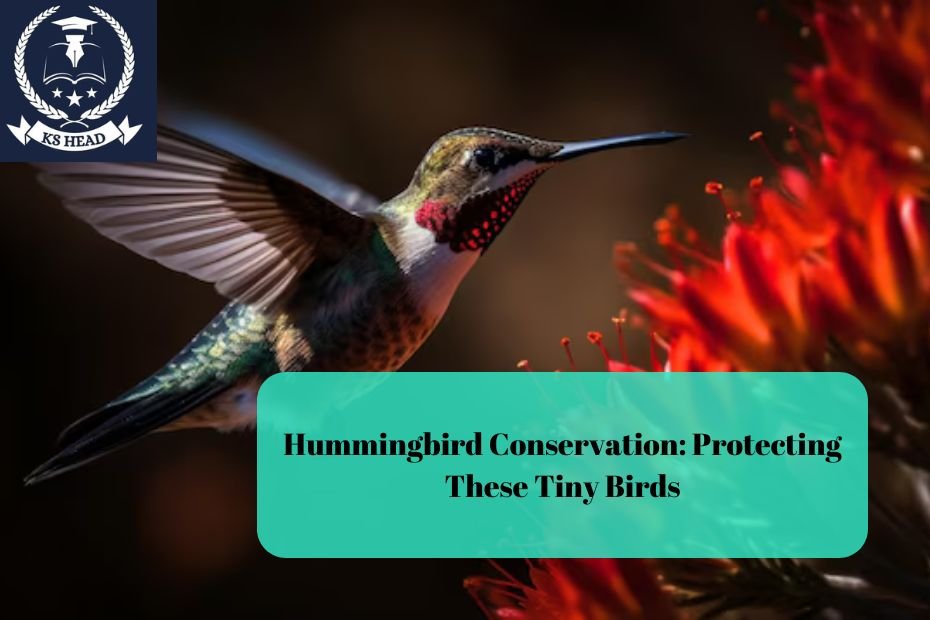Hummingbirds are some of the most fascinating creatures on our planet. Known for their iridescent feathers, incredible flying abilities, and vital role in pollination, these tiny birds are not just a delight to observe; they are crucial to maintaining healthy ecosystems. However, many species of hummingbirds face significant threats due to habitat loss, climate change, and other environmental challenges. This article explores the importance of hummingbirds, the threats they face, conservation efforts, and how individuals can help protect these remarkable birds.
Table of Contents
- Introduction
- The Importance of Hummingbirds
- Threats to Hummingbirds
- Habitat Loss
- Climate Change
- Pesticides and Pollution
- Invasive Species
- Conservation Efforts
- Organizations and Initiatives
- Research and Education
- Habitat Restoration
- How You Can Help
- Create a Hummingbird-Friendly Environment
- Support Conservation Organizations
- Educate Others
- Conclusion
- FAQs
Introduction
Hummingbirds belong to the family Trochilidae and are native to the Americas. With over 300 species, they are primarily found in Central and South America, although several species inhabit North America as well. These birds are known for their vibrant plumage and unique characteristics, such as their ability to hover in mid-air and their rapid wing beats.
Despite their small size, hummingbirds play a significant role in their ecosystems. They are important pollinators, facilitating the reproduction of many flowering plants. Unfortunately, their populations are declining due to various environmental threats. Understanding the significance of hummingbirds and the challenges they face is crucial for their conservation.
The Importance of Hummingbirds
1. Pollination
Hummingbirds are critical pollinators for many native plants, including various flowers, shrubs, and trees. As they feed on nectar, they inadvertently transfer pollen from one bloom to another, facilitating the reproduction of these plants. This relationship is vital for maintaining biodiversity and ensuring the health of ecosystems.
2. Biodiversity
By pollinating a wide range of plant species, hummingbirds help support diverse ecosystems. Healthy ecosystems provide habitat for numerous animal and plant species, contributing to overall ecological balance.
3. Cultural Significance
Hummingbirds hold cultural importance in various societies. They are often seen as symbols of joy, love, and beauty. Many indigenous cultures revere hummingbirds for their agility and the role they play in nature.
4. Economic Impact
Hummingbirds contribute to the economy through eco-tourism and gardening. Birdwatching enthusiasts often travel to see these beautiful creatures, boosting local economies in areas where hummingbirds thrive.
Threats to Hummingbirds
Despite their importance, hummingbirds face numerous threats that endanger their populations.
Habitat Loss
Urban development, agriculture, and deforestation lead to the destruction of natural habitats. As forests and wildflower meadows are cleared, hummingbirds lose their feeding and nesting sites. Habitat fragmentation can also isolate populations, making it difficult for them to find mates and food.
Climate Change
Climate change affects hummingbirds in several ways, including altering their migration patterns, breeding seasons, and food availability. As temperatures rise and weather patterns shift, the flowering times of plants may not coincide with the arrival of hummingbirds, leading to food shortages.
Pesticides and Pollution
The use of pesticides in agriculture poses significant risks to hummingbirds. These chemicals can poison the birds directly or reduce the availability of nectar-rich flowers, affecting their food sources. Additionally, pollution from urban areas can contaminate habitats, further threatening hummingbird populations.
Invasive Species
Invasive plants and animals can disrupt ecosystems and outcompete native species that hummingbirds rely on for food and nesting sites. For example, non-native plants may not provide the necessary nectar, leading to food shortages for hummingbirds.
Conservation Efforts
Recognizing the threats faced by hummingbirds, various organizations and initiatives work tirelessly to protect these birds and their habitats.
Organizations and Initiatives
Numerous organizations focus on hummingbird conservation, such as the National Audubon Society, the Hummingbird Society, and BirdLife International. These organizations engage in research, habitat protection, and public education to raise awareness about the importance of hummingbirds.
Research and Education
Research plays a crucial role in understanding hummingbird behavior, migration patterns, and ecological needs. By gathering data, scientists can develop effective conservation strategies. Educational programs help inform the public about the importance of hummingbirds and how individuals can contribute to their protection.
Habitat Restoration
Efforts to restore habitats are essential for hummingbird conservation. This includes replanting native vegetation, creating wildlife corridors, and protecting existing natural areas. Restoring ecosystems can help provide the necessary food and nesting sites for hummingbirds.
How You Can Help
There are many ways individuals can contribute to hummingbird conservation efforts:
Create a Hummingbird-Friendly Environment
- Plant Native Flowers: Choose native plants that produce nectar-rich flowers to attract hummingbirds. Consider plants like trumpet vine, bee balm, and salvia.
- Provide Feeders: Use hummingbird feeders filled with a sugar-water solution (1 part sugar to 4 parts water) to supplement their diet. Make sure to clean feeders regularly to prevent mold growth.
- Create Shelter: Provide natural shelter through shrubs and trees, which can serve as nesting sites and resting areas for hummingbirds.
Support Conservation Organizations
Consider donating to or volunteering with organizations dedicated to bird conservation. Your support can help fund research, habitat restoration, and educational initiatives.
Educate Others
Spread awareness about the importance of hummingbirds and the threats they face. Share information with friends, family, and community members to promote hummingbird conservation efforts.
Conclusion
Hummingbirds are remarkable creatures that play a vital role in our ecosystems. However, they face numerous threats that require urgent attention. By understanding the importance of these tiny birds and the challenges they encounter, we can take meaningful steps toward their conservation. Whether through personal efforts, supporting conservation organizations, or educating others, each individual can contribute to protecting hummingbirds for future generations. Together, we can ensure that these beautiful birds continue to grace our gardens and natural spaces.
FAQs
1. What is the best way to attract hummingbirds to my garden?
Plant a variety of native, nectar-rich flowers and provide hummingbird feeders filled with a sugar-water solution. Keeping the area clean and providing shelter will also help attract them.
2. How can I tell if a hummingbird feeder is clean?
Check for mold or any residue. Rinse the feeder thoroughly with hot water, and if necessary, use a mild soap. Make sure to rinse well to remove any soap residue.
3. What types of flowers do hummingbirds prefer?
Hummingbirds are attracted to brightly colored flowers, especially red, orange, and pink ones. Some favorites include bee balm, salvia, and trumpet vine.
4. Can I use food coloring in my hummingbird feeder?
It’s best to avoid food coloring, as it can be harmful to birds. Stick to a simple sugar-water solution to keep the nectar safe and healthy.
5. How do I know if I have hummingbirds in my area?
Look for their unique flying patterns and listen for their distinctive hum. Setting up feeders can also help attract and observe hummingbirds in your area.

